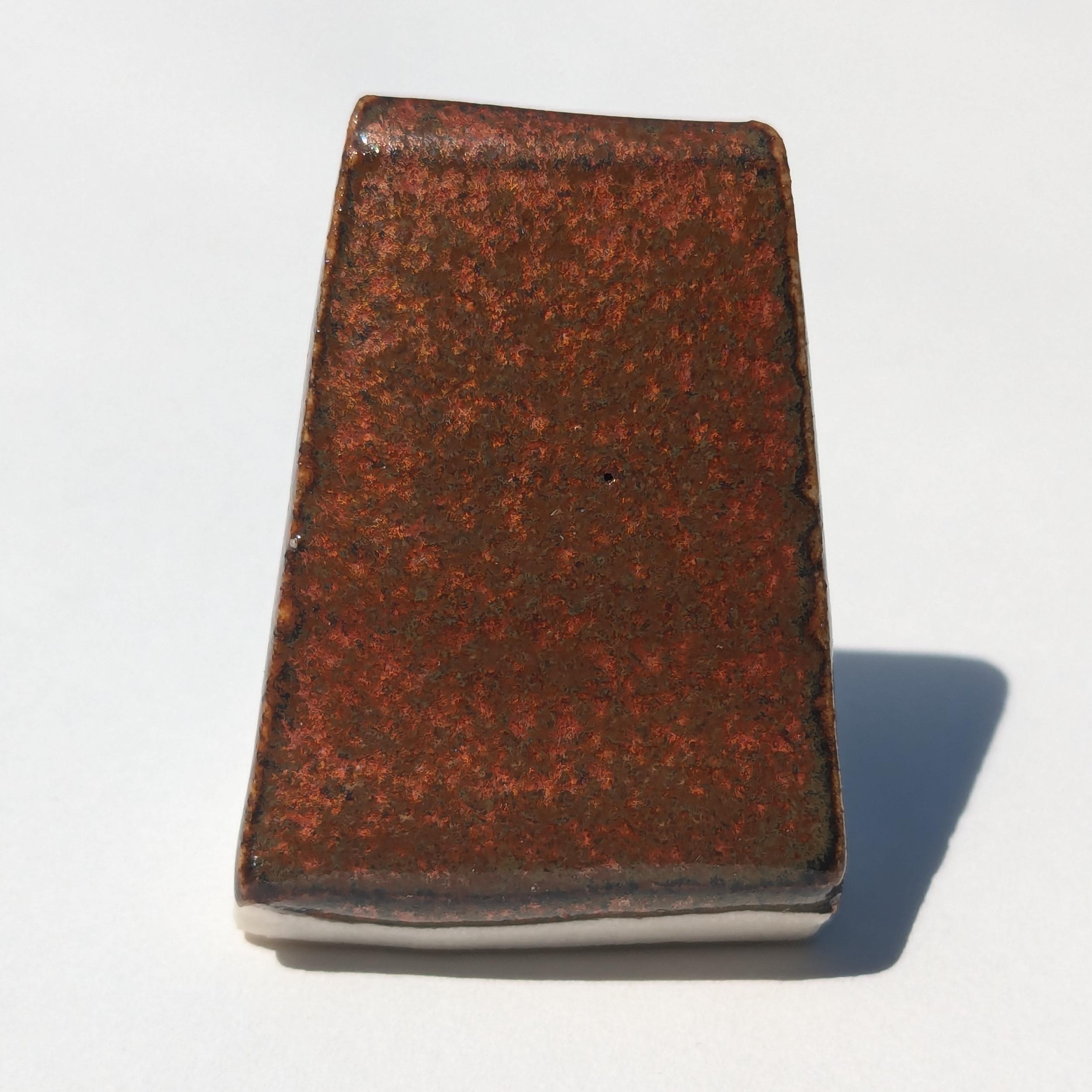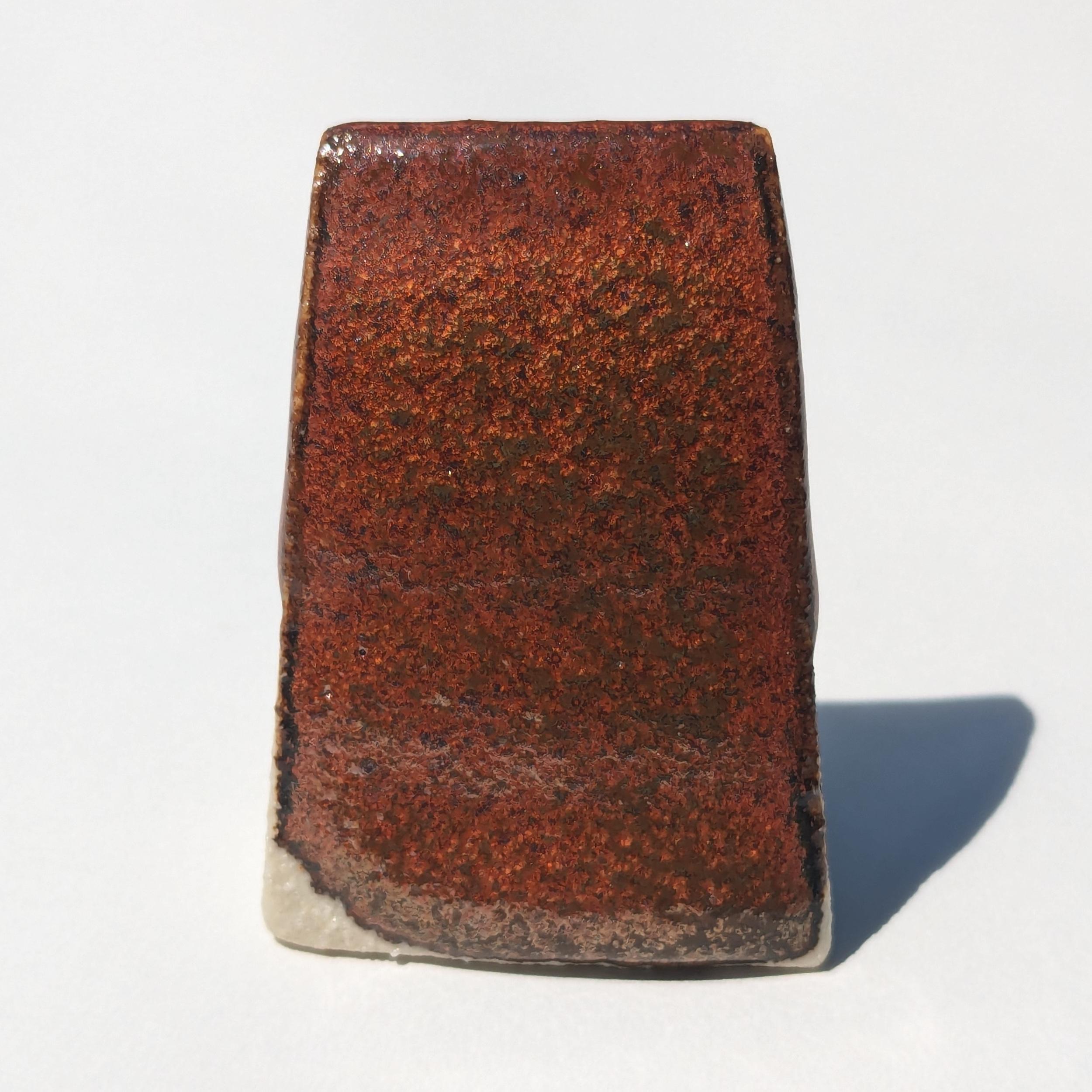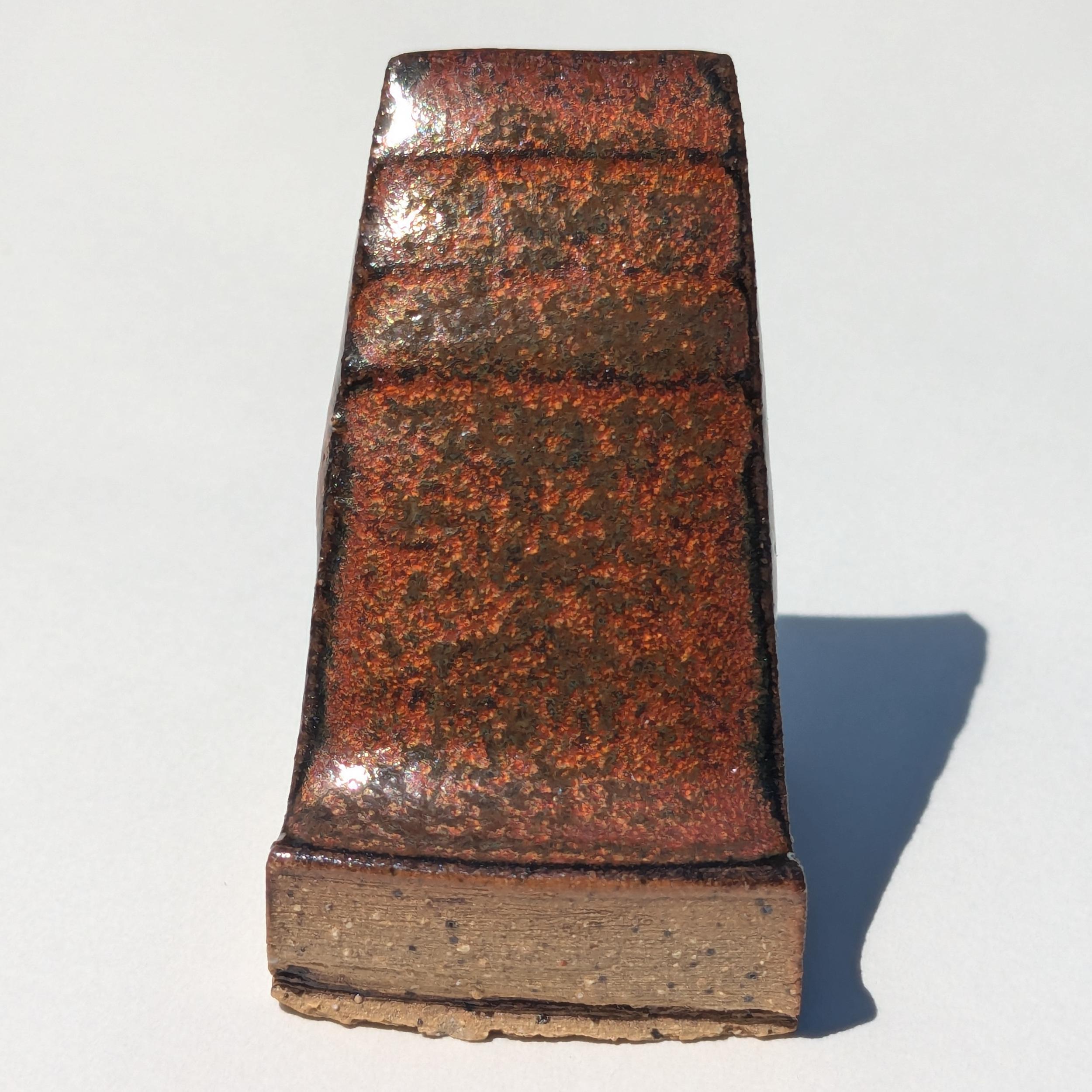


This cone 6 iron red glaze was created to replace a recipe that used Gerstley Borate. Since Gerstley is no longer available, I used a boron frit to source the boron. The original recipe had an impossible amount of boron from an extremely high Gerstley Borate content. This probably provided the melt fluidity, but there are better ways of making an iron red glaze.
The replacement was made by combining two sources:
From these two information sources, I came up with these chemical guidelines:
| Porcelain | White Stoneware | High Iron Stoneware |
|---|---|---|
 |
 |
 |
This glaze worked first on the first try. That's the power of glaze chemistry, baby! I got lovely iron red colors on porcelain, low iron stoneware, and high iron stoneware. The only difference in color is that the glaze breaks black on high iron stoneware.
The synthetic iron oxide, bone ash, and kaolin all contribute to making the glaze rather thick. Since the glaze should go on thin, err on adding more water. In my case I added 90% additional water. The specific gravity came out to 1.45, but I think it could go lower to 1.40.
Created . Updated .
Home > Q Science > QD Chemistry > Iron Red Glaze